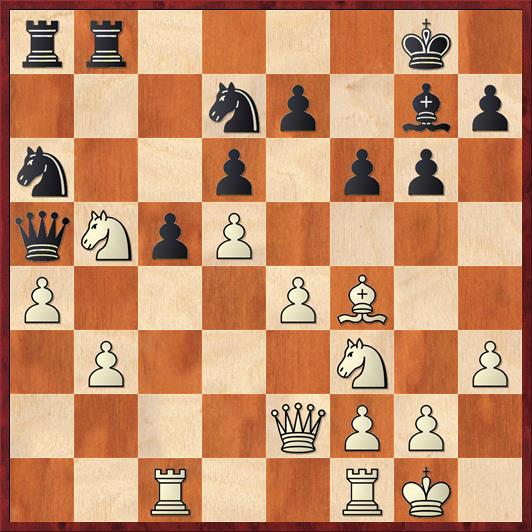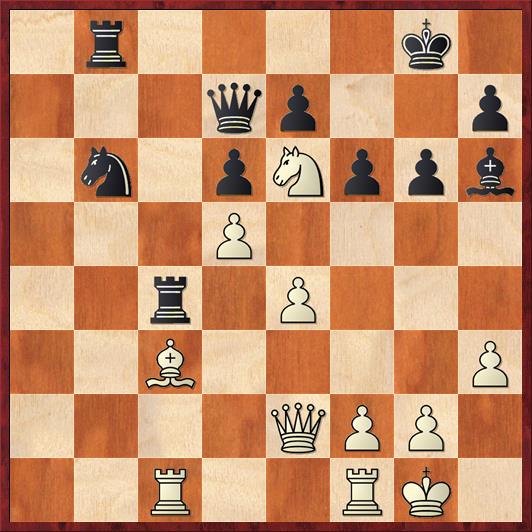I’ve learned one thing from watching kids play chess: the result of a game often depends not so much on the position on the board as on the position in their minds. Often I’ll see a kid lose a piece or more, but still stay resolute and continue making threats, and eventually win. I’ll also see a kid win material and then go into a shell, retreating and avoiding their opponent when they should do exactly the opposite.
Even among masters, I think that the player who has more fighting spirit or more belief in themselves will on average do better than the position or the computer evaluation says they ought to. Very often this is the higher-rated player: in otherwise even positions, a rating difference of 100 points will give the higher-rated player a boost of confidence that if he can just keep the game going, his opponent will falter. And vice versa, the lower-rated player will often have just a little bit of self-doubt that makes him play more cautiously than usual.
But there are times when the script flips and self-confidence can work in favor of the lower-rated player. I’d like to show you a game from several years ago where I won in large part because I believed I was going to win. By the way, it’s also a really interesting endgame. And there’s also one personal reason that it was a memorable game, which I’ll get to at the end.
Dana Mackenzie – Ed Formanek
1994 Cardinal Open
My opponent was rated about 200 points higher than me (2400 to 2200) and in addition he is an International Master. Let me also say that he is a “gentleman and a scholar,” in the old-fashioned phrase. Look up his Wikipedia page, and you’ll see that he is well-known both as a mathematician and a chess player. In fact, I think he is one of the few people who is equally accomplished at both. Some other well-known chess player/mathematicians, such as Emanuel Lasker and John Nunn, really (if the truth be told) did not do very much significant math.
I went into this game with one psychological advantage: I had beaten Formanek in our only previous encounter, a couple years earlier. In fact, he was the first International Master that I ever beat in a tournament. I think that this reduced the rating-intimidation factor. Although I did make mistakes, at no point in the game did I play as if I was afraid of my opponent.
Also, Formanek chose to play an opening (the Benko Gambit) that I have an extremely good record against. This helped me in the sense that I trusted my position and had some sense of what I wanted to do with it.
1. d4 Nf6 2. c4 c5 3. d5 b5 4. cb a6 5. e3 g6 6. Nc3 Bg7 7. Nf3 O-O 8. a4 ab 9. Bxb5 d6 10. O-O Na6 11. e4 Nb4 12. Qe2 Ba6 13. h3 Nfd7 14. Bf4 Qc7 15. Rac1 Rfb7 16. Bxa6 Nxa6 17. Nb5 Qa5 18. b3 f6?
Position after 18. … f6. White to move.
FEN: rr4k1/3np1bp/n2p1pp1/qNpP4/P3PB2/1P3N1P/4QPP1/2R2RK1 w – – 0 19
This was the first really surprising move of the game to me, and it still is. I thought that Black’s natural move was 18. … Nc7, trying to pry open the b-file. It’s hard to explain why Formanek didn’t play it, but possibly after 19. Nxc7 (the computer’s recommendation) 19. … Qxc7 20. Qd3 or Rb1 or Nd2, he may have found the position lacking in the usual Benko Gambit “juice” for the Black player. I agree with that, by the way; it’s one reason I like the 5. e3 variation. Nevertheless, Formanek should have played the move the position calls for. By contrast, 18. … f6 has multiple defects. It blocks the long diagonal and cripples Black’s favorite piece. It creates a weakness on e6. And it gives White extra tempi to fortify the knight’s position on b5.
In spite of this, I did mess up and allow Formanek to equalize. But psychologically, I always felt as if I had a good position.
19. Nd2 Qd8 20. Nc4 Nc7 21. N4a3 Nxb5 22. Nxb5 Nb6 23. Bd2? …
Beginning a faulty plan. The only way that Black can get counterplay is to prepare … c5-c4. The move 23. Be3! would make it extremely difficult for him ever to achieve that break. The move 23. Bd2 shows a certain amount of dogmatic inflexibility on my part. When possible, I like to counter the Benko bishop by putting my own bishop on c3. However, in this position it’s simply not necessary. Formanek has killed his own bishop by playing … f6. My Bd2-c3 maneuver gives that bishop the undeserved gift of a new diagonal to operate on (c1-h6). Lesson for me: Play the actual position on the board, not your pre-conceived notion of how the opening should be played.
23. … Qd7 24. Bc3 c4!
Of course. Now Black is back in the game.
25. bc Rxa4 26. Nd4 …
Again, let’s go back to mental states. Typically, in the Benko Gambit when Black wins back the gambit pawn it’s the beginning of the end for White. Giving back the pawn does nothing to ease the pressure on White’s position. This position, though, is quite different. Black wins back the pawn but White gets a beautiful outpost for the knight on e6 or c6. I still felt very happy about my position, and when you feel happy, you play happy.
26. … Rxc4 27. Ne6 …
The computer says 27. Nc6 is better, but who can resist such a beautiful square?
27. … Bh6
Position after 27. … Bh6. White to move.
FEN: 1r4k1/3qp2p/1n1pNppb/3P4/2r1P3/2B4P/4QPP1/2R2RK1 w – – 0 28
My next move is a type of move that I really like: a momentum-shifting move. With 24. … c4 Black took the initiative, but my next move takes it back.
28. Bd2! …
Admittedly, this shows the whole absurdity of my Bd2-c3 plan: the best move for me now is to move the bishop back where it came from. However, let’s not worry about the past. The key point about his move — which is also consistent with my move 27. Ne6 — is that I trade off the dark-square bishops and give Black some real problems because of the weakness of the dark squares around his king. This is very unfamiliar territory for a Benko Gambit player!
Even if my plan wasn’t “right” according to the computer, I like the fact that I had a plan and stuck to it.
28. … Bxd2
If 28. … Rxc1 29. Rxc1 Black still loses control over the dark squares, plus he has exchanged off his active rook.
29. Qxd2 Rxe4 30. Qh6? …
This was, of course, the whole point: In order to stop mate, Black will have to give up the exchange. However, White had a better way! I could first play 30. Rc7! Qe8 and then 31. Qh6. Now 31. … Qf7 simply loses to 32. Rb1, threatening 33. Rxb6. So black will have to give up the exchange anyway with 31. … Rxe6 32. de. The difference between this and the game is that White keeps the e6 pawn; in the game Black is able to take it.
There’s another good lesson here. It has to do with wringing the last drop of advantage from a position or a concept. I saw the tide-turning idea of threatening mate on g7, and I was so excited about it that I didn’t think about how I could make the threat even better.
Grandmasters understand this “last drop” principle. I didn’t at this point in my chess career, and in truth I still don’t do this consistently enough.
30. … Rxe6 31. d3 Qxe6 32. Rfe1 Qd7 33. Rc2 …
Position after 33. Rc2. Black to move.
FEN: 1r4k1/3qp2p/1n1p1ppQ/8/8/7P/2R2PP1/4R1K1 b – – 0 33
I think that this is a good position in which to take a break and finish in my next post. What do you think about this position? What is Black playing for? White is White playing for? What should be the plan for each side? And don’t forget the Mike Splane question: If you’re White, how are you going to win this game?
In a sense, everything that has gone before has been merely a prologue: the position has changed drastically over the last five moves, and the winner will be the player who best orients himself to the new requirements of the position.





